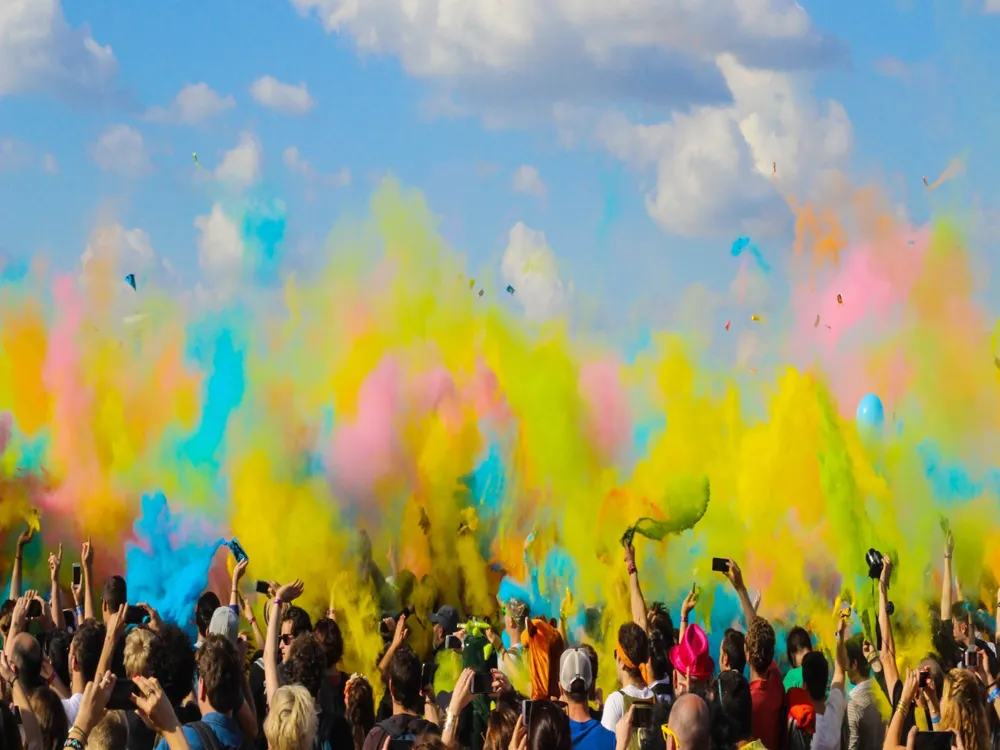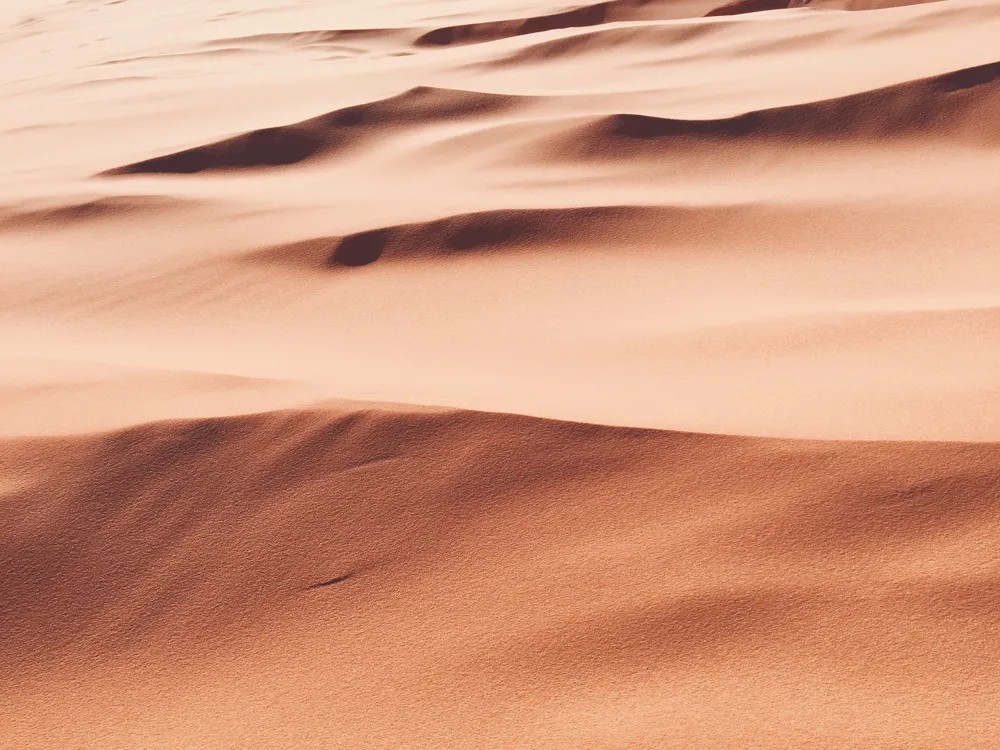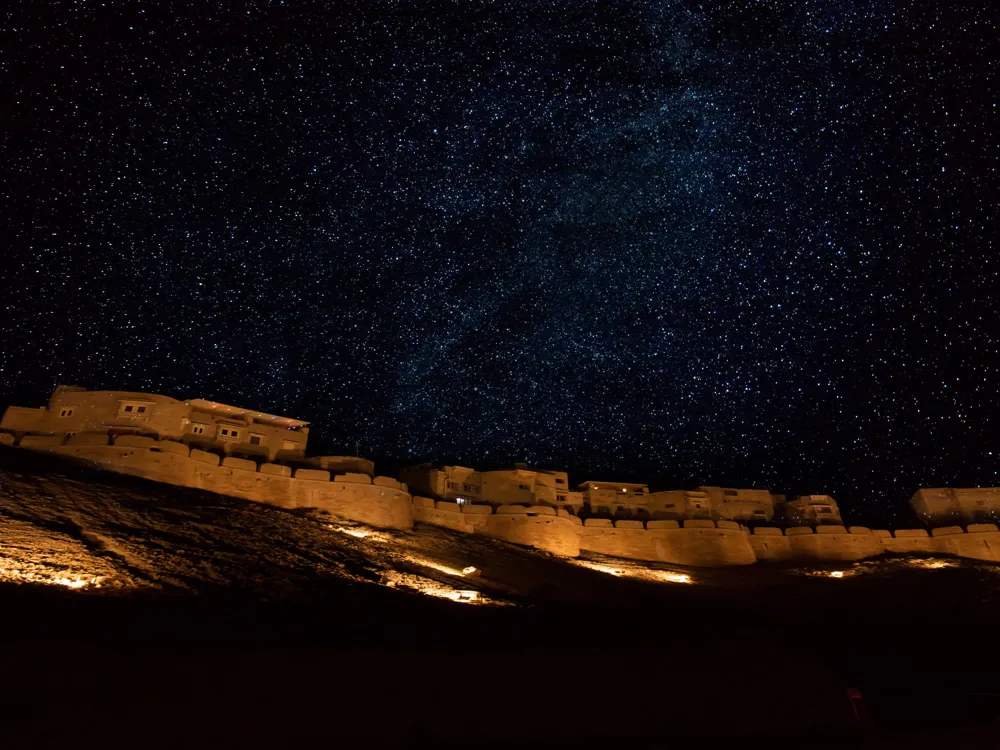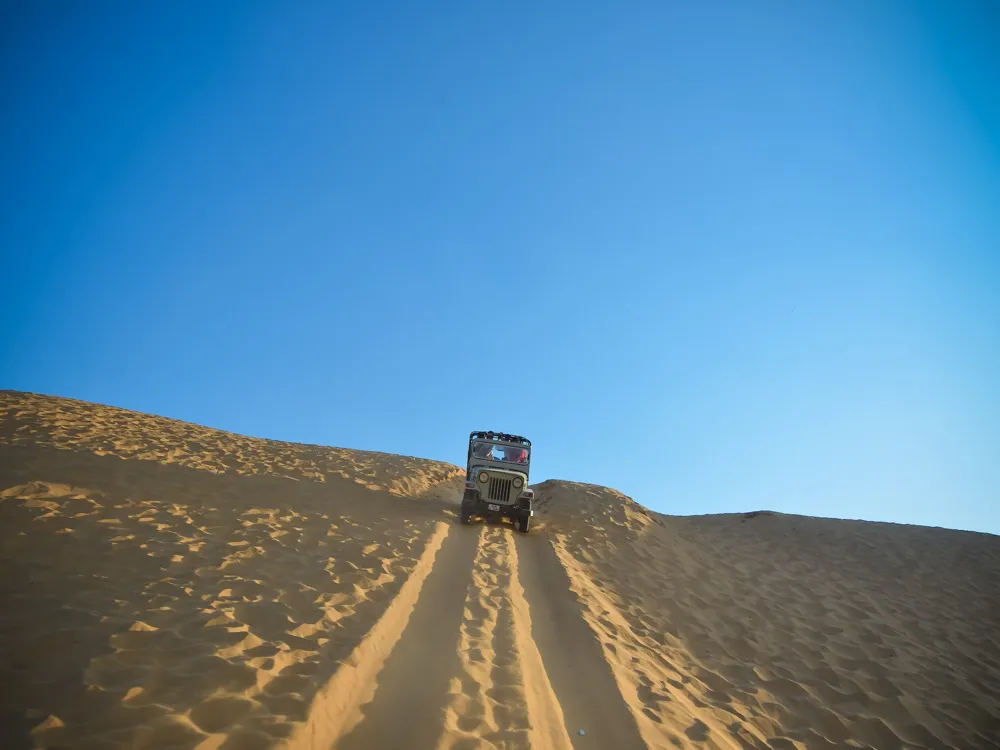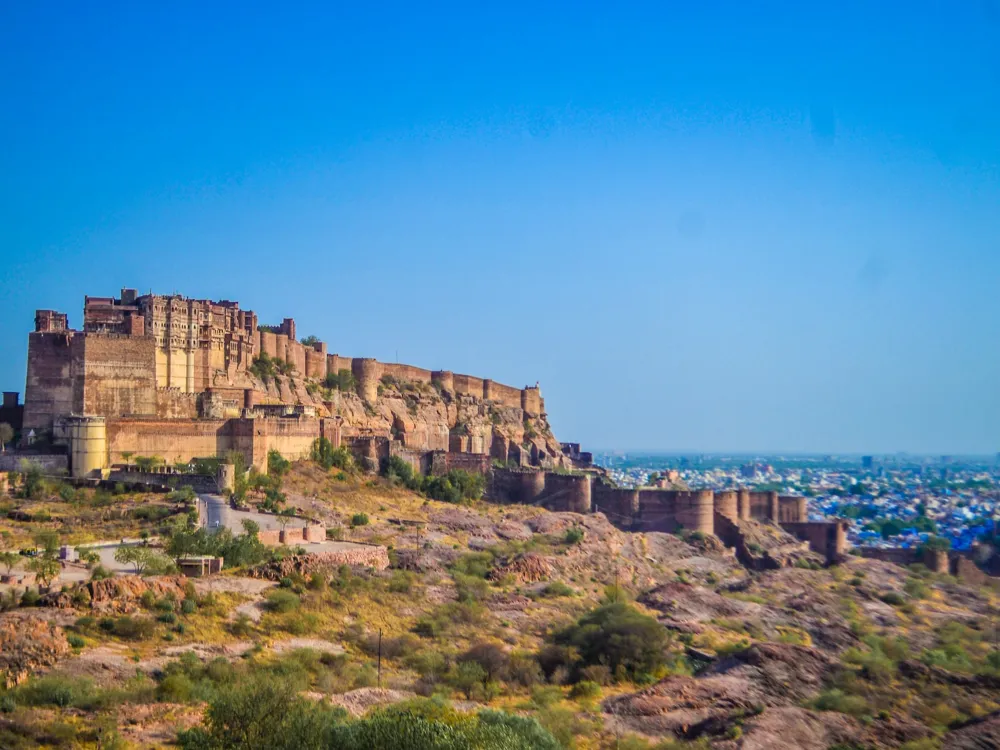Junagarh Fort, nestled in the heart of Bikaner, Rajasthan, stands as a testament to India's rich cultural and architectural heritage. Built in 1589 by Raja Rai Singh, a general in the army of the Mughal emperor Akbar, this fort is an epitome of magnificence and grandeur. Unlike many other forts in Rajasthan which are perched on hilltops, Junagarh Fort is one of the few major forts located in the desert plains, adding to its unique appeal. The fort's history is as fascinating as its structure. Surviving several attacks and wars through centuries, it holds tales of bravery, romance, and opulence. The fort complex comprises numerous palaces, courtyards, and temples, each adorned with intricate carvings, magnificent artwork, and decorated with precious stones and marbles. The fort’s walls and bastions, made of red sandstone and marble, reflect a blend of Rajput, Mughal, and Gujarati architectural styles. Visitors are often captivated by the fort's splendid interiors, which include Anup Mahal, Ganga Mahal, and Rang Mahal, among others. These palaces exhibit an array of colored glass, mirrors, and ornate wooden ceilings, offering a glimpse into the royal lifestyle of the past. The fort also houses a museum, displaying a rich collection of artifacts, costumes, and armaments belonging to the Rajput era. The fort's strategic design and layout are noteworthy. It consists of two main parts: the fort itself and the administrative building called Karan Mahal. The fortification is nearly a kilometer long, with 37 bastions and two entrance gates. The main gate, Suraj Pol, leads to the public audience hall, while the second gate, Daulat Pol, features handprints of sati, royal Rajput women who committed self-immolation. The architecture of Junagarh Fort is a perfect amalgamation of Indian artistry with Persian and Western influences, making it a must-visit destination for history and architecture enthusiasts. The architectural splendor of Junagarh Fort lies in its intricacy and diversity, showcasing a blend of Rajput, Mughal, and Persian influences. The fort's layout is thoughtfully designed, incorporating defensive elements with aesthetic beauty. The fort walls, towering at an impressive height, are built of red sandstone and are interspersed with bastions that were used for defense purposes. One of the most striking features of the fort is its palaces, known for their exquisite craftsmanship. The Anup Mahal, the most opulent palace within the fort, is renowned for its gold leaf painting, intricate lattice work, and exquisite inlay work. The Phool Mahal, or Flower Palace, showcases delicate floral motifs and glasswork, reflecting the influence of Mughal artistry. The Sheesh Mahal or Mirror Palace is another marvel within the fort. It is adorned with mirrors and colored glass pieces, creating a mesmerizing effect. The Badal Mahal, or Cloud Palace, features walls painted with frescoes depicting monsoon clouds, a rare artistic representation in arid Rajasthan. The fort's temples and pavilions are equally impressive. The Har Mandir, a royal chapel, was where the royal family worshipped their deities and celebrated festivals. The courtyards, such as the Dungar Niwas Courtyard, are expansive and served multiple purposes, from royal gatherings to public audiences. The museum within the fort houses a vast collection of artifacts, including manuscripts, jewels, carpets, weapons, and royal attires. Each item in the museum tells a story, providing insights into the lives of the rulers who once resided in this magnificent fort. The fusion of various architectural styles in Junagarh Fort is not just a representation of the cultural influences over the centuries but also a testament to the skills of the artisans and craftsmen of that era. The fort, with its grandiose structure and detailed craftsmanship, stands as an enduring symbol of Rajasthan's rich architectural heritage. The ideal time to visit Junagarh Fort is from October to March, when the weather in Rajasthan is comparatively cooler and more pleasant. Summer months can be extremely hot, making it challenging to explore the fort comfortably. Opting for a guided tour can greatly enhance your experience. Knowledgeable guides provide insights into the fort’s history, architecture, and anecdotes about the royal inhabitants, offering a more immersive experience. Dressing conservatively and comfortably is advisable. Lightweight, breathable clothing is ideal for the climate, and comfortable walking shoes are a must as the fort exploration involves a lot of walking. Photography is allowed in most areas of the fort, but there might be certain restrictions in specific sections. It's advisable to check for any photography fees or rules beforehand. Carry water bottles to stay hydrated, especially during the warmer months. There are also small cafes and eateries inside the fort where you can take breaks and refresh. Junagarh Fort is easily accessible from various parts of Rajasthan. Bikaner, being well connected by road, rail, and air, makes visiting the fort convenient for tourists. By Air: The nearest airport is Jodhpur Airport, from where you can hire a taxi or take a bus to Bikaner. By Train: Bikaner Railway Station is well connected to major cities in India. From the station, the fort is a short drive away. By Road: Bikaner is well connected by road with major cities. Regular bus services, both government and private, ply to and from Bikaner. Alternatively, one can hire a taxi to reach the fort. Read More:Overview of Junagarh Fort, Bikaner, Rajasthan
Architecture of Junagarh Fort
Tips When Visiting Junagarh Fort
Best Time to Visit
Guided Tours
Dress Appropriately
Photography
Stay Hydrated
How to Reach Junagarh Fort
Junagarh Fort
Bikaner
Rajasthan
₹ 15,250 onwards
View bikaner Packages
Weather :
Label : Must Visit
Tags : Forts & Palaces
Timings : 10:00 AM - 4:30 PM
Time Required : 2-3 hours
Entry Fee : Indians: INR 50,
Foreigner: INR 300,
Audio Tour: INR 350,
Phool Mahal and Chander Mahal: INR 100
Photography :
Allowed
Student Discounts on Ticket Prices at Junagarh Fort : Indian (Student Concession): INR 30,
Foreigner (Student Concession): INR 150,
Audio Tour (Student Concession): INR 200
Planning a Trip? Ask Your Question
Bikaner Travel Packages
View All Packages For Bikaner
Top Hotel Collections for Bikaner

Private Pool

Luxury Hotels

5-Star Hotels

Pet Friendly
Top Hotels Near Bikaner
Other Top Ranking Places In Bikaner
View All Places To Visit In bikaner
View bikaner Packages
Weather :
Label : Must Visit
Tags : Forts & Palaces
Timings : 10:00 AM - 4:30 PM
Time Required : 2-3 hours
Entry Fee : Indians: INR 50,
Foreigner: INR 300,
Audio Tour: INR 350,
Phool Mahal and Chander Mahal: INR 100
Photography :
Allowed
Student Discounts on Ticket Prices at Junagarh Fort : Indian (Student Concession): INR 30,
Foreigner (Student Concession): INR 150,
Audio Tour (Student Concession): INR 200
Planning a Trip? Ask Your Question
Bikaner Travel Packages
View All Packages For Bikaner
Top Hotel Collections for Bikaner

Private Pool

Luxury Hotels

5-Star Hotels

Pet Friendly







